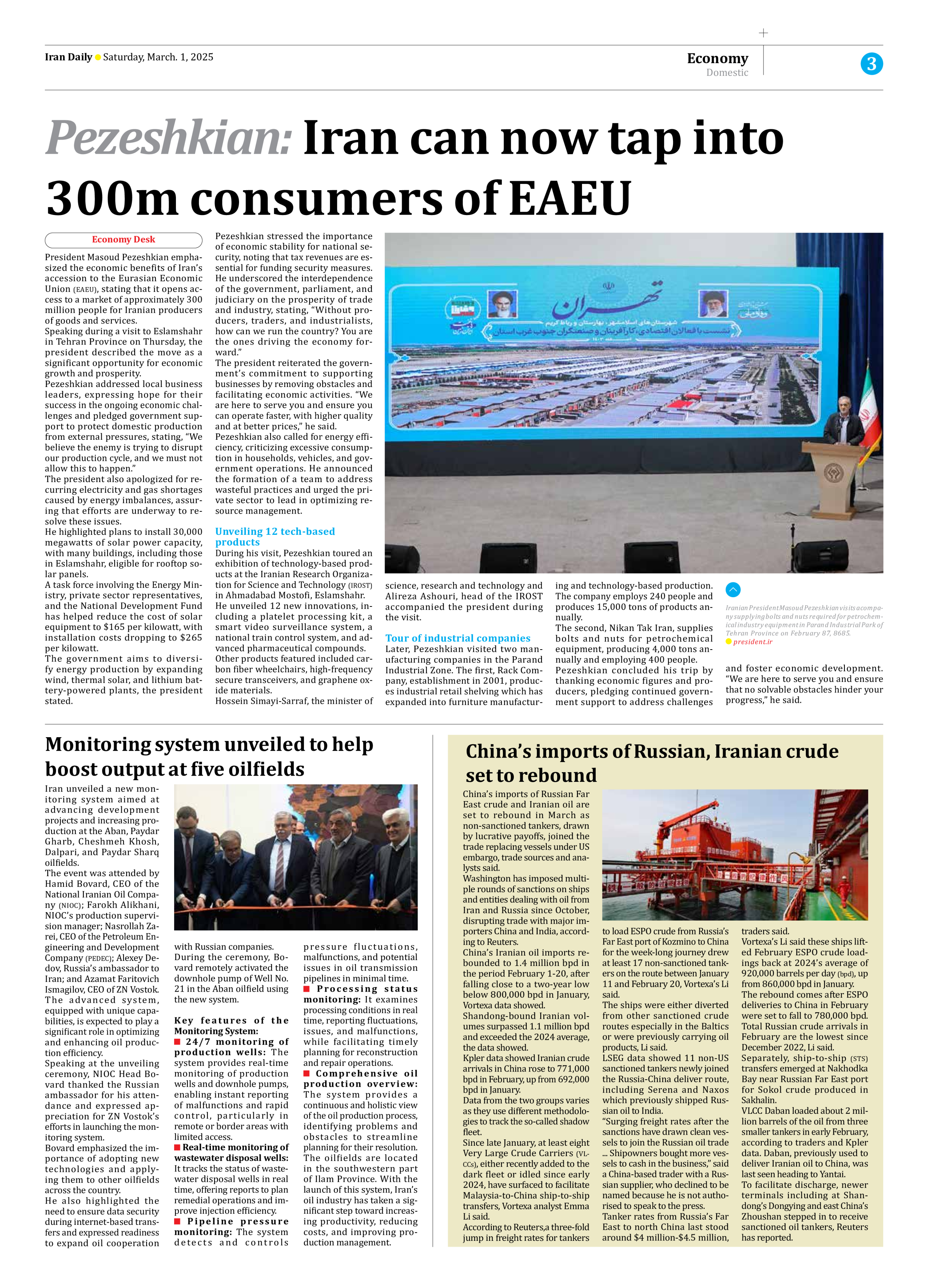
China’s imports of Russian, Iranian crude set to rebound
China’s imports of Russian Far East crude and Iranian oil are set to rebound in March as non-sanctioned tankers, drawn by lucrative payoffs, joined the trade replacing vessels under US embargo, trade sources and analysts said.
Washington has imposed multiple rounds of sanctions on ships and entities dealing with oil from Iran and Russia since October, disrupting trade with major importers China and India, according to Reuters.
China’s Iranian oil imports rebounded to 1.4 million bpd in the period February 1-20, after falling close to a two-year low below 800,000 bpd in January, Vortexa data showed.
Shandong-bound Iranian volumes surpassed 1.1 million bpd and exceeded the 2024 average, the data showed.
Kpler data showed Iranian crude arrivals in China rose to 771,000 bpd in February, up from 692,000 bpd in January.
Data from the two groups varies as they use different methodologies to track the so-called shadow fleet.
Since late January, at least eight Very Large Crude Carriers (VLCCs), either recently added to the dark fleet or idled since early 2024, have surfaced to facilitate Malaysia-to-China ship-to-ship transfers, Vortexa analyst Emma Li said.
According to Reuters,a three-fold jump in freight rates for tankers to load ESPO crude from Russia’s Far East port of Kozmino to China for the week-long journey drew at least 17 non-sanctioned tankers on the route between January 11 and February 20, Vortexa’s Li said.
The ships were either diverted from other sanctioned crude routes especially in the Baltics or were previously carrying oil products, Li said.
LSEG data showed 11 non-US sanctioned tankers newly joined the Russia-China deliver route, including Serena and Naxos which previously shipped Russian oil to India.
“Surging freight rates after the sanctions have drawn clean vessels to join the Russian oil trade ... Shipowners bought more vessels to cash in the business,” said a China-based trader with a Russian supplier, who declined to be named because he is not authorised to speak to the press.
Tanker rates from Russia’s Far East to north China last stood around $4 million-$4.5 million, traders said.
Vortexa’s Li said these ships lifted February ESPO crude loadings back at 2024’s average of 920,000 barrels per day (bpd), up from 860,000 bpd in January.
The rebound comes after ESPO deliveries to China in February were set to fall to 780,000 bpd. Total Russian crude arrivals in February are the lowest since December 2022, Li said.
Separately, ship-to-ship (STS) transfers emerged at Nakhodka Bay near Russian Far East port for Sokol crude produced in Sakhalin.
VLCC Daban loaded about 2 million barrels of the oil from three smaller tankers in early February, according to traders and Kpler data. Daban, previously used to deliver Iranian oil to China, was last seen heading to Yantai.
To facilitate discharge, newer terminals including at Shandong’s Dongying and east China’s Zhoushan stepped in to receive sanctioned oil tankers, Reuters has reported.







